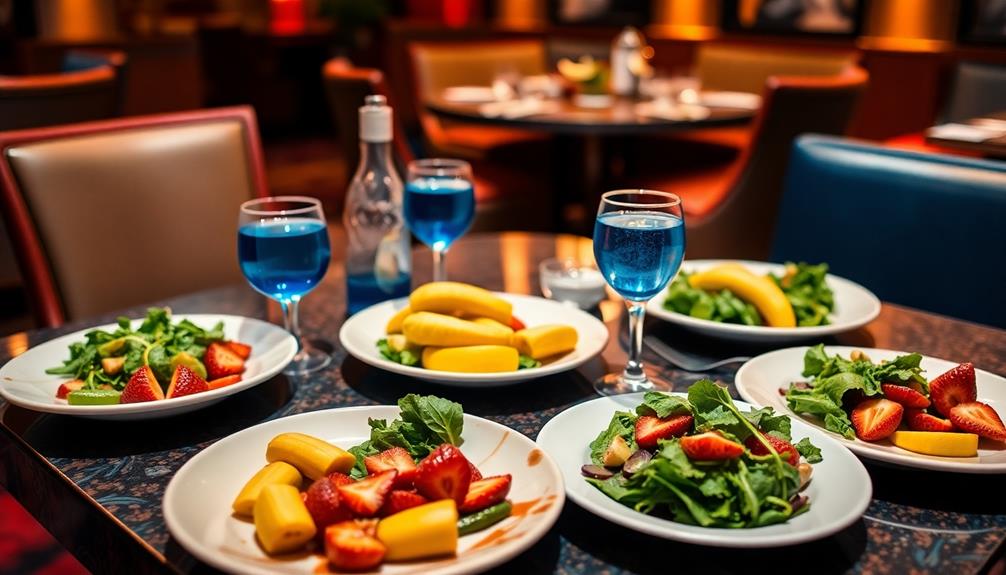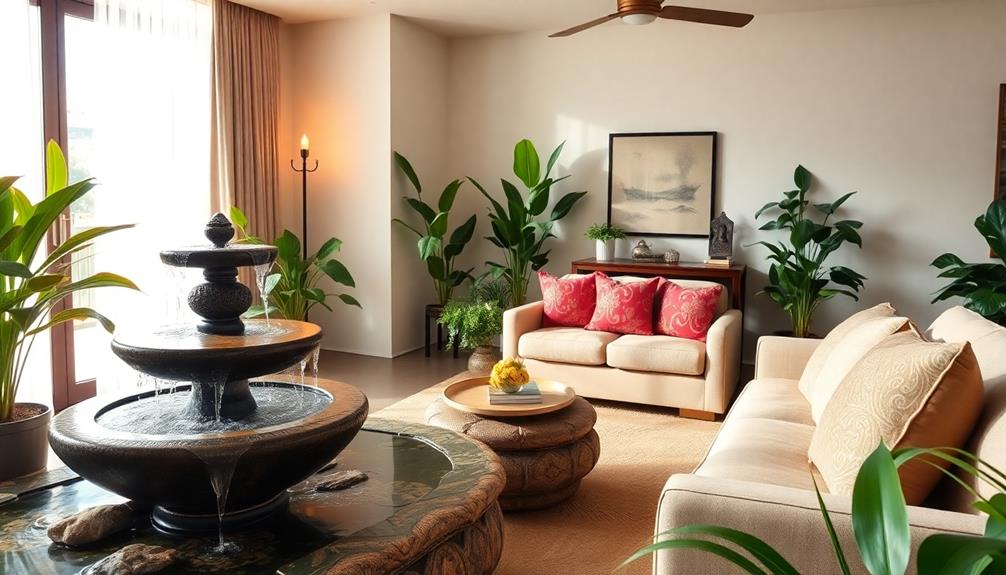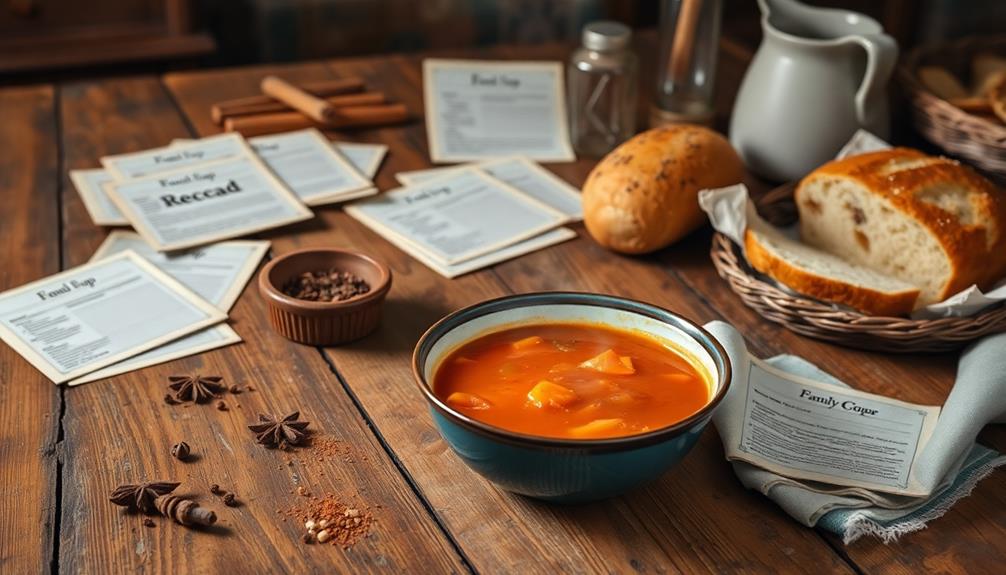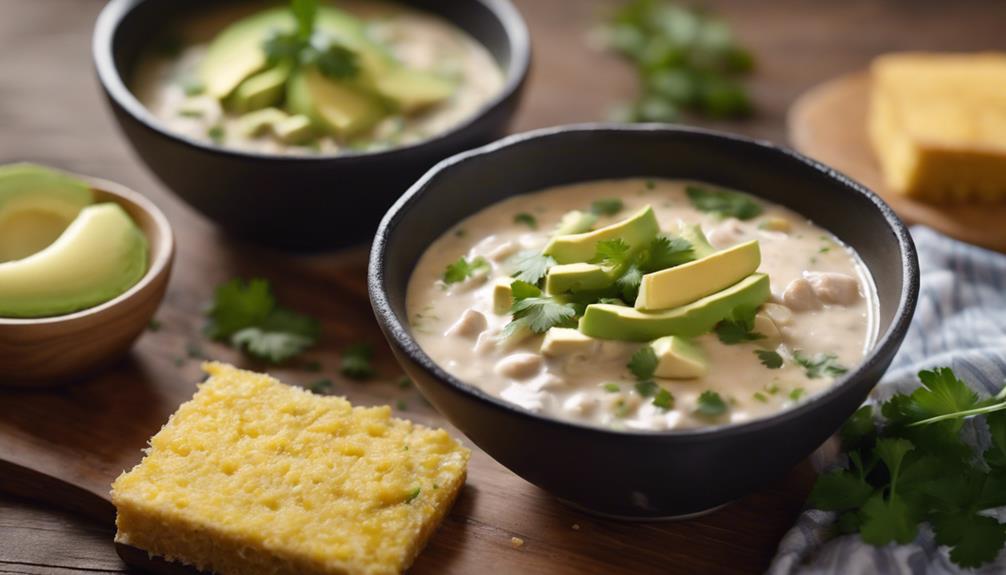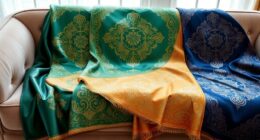Colors play a powerful role in shaping your appetite and food choices. Warm colors like red, orange, and yellow can stimulate hunger, while cool colors like blue and gray often suppress it. For instance, red boosts your appetite, making meals seem more appealing. On the other hand, blue might make food seem less desirable due to associations with poison. Using vibrant colors in your food presentation can enhance visual appeal and encourage healthier choices. Understanding these effects can help you create meals that are not only delicious but also visually enticing, guiding you toward more flavorful experiences.
Key Takeaways
- Warm colors like red, orange, and yellow stimulate hunger and excitement, enhancing meal appeal and energy intake.
- Cool colors such as blue and purple suppress appetite, often leading to reduced food intake due to negative associations.
- Brightly colored foods are often nutrient-rich, promoting healthier eating habits and enhancing the overall dining experience.
- Visual perception plays a significant role in food choices, with 80% of first impressions based on appearance, influencing appetite.
- Seasonal cooking with vibrant produce improves taste, presentation, and nutritional value, encouraging creativity and exploration in meal planning.
Color Psychology and Appetite
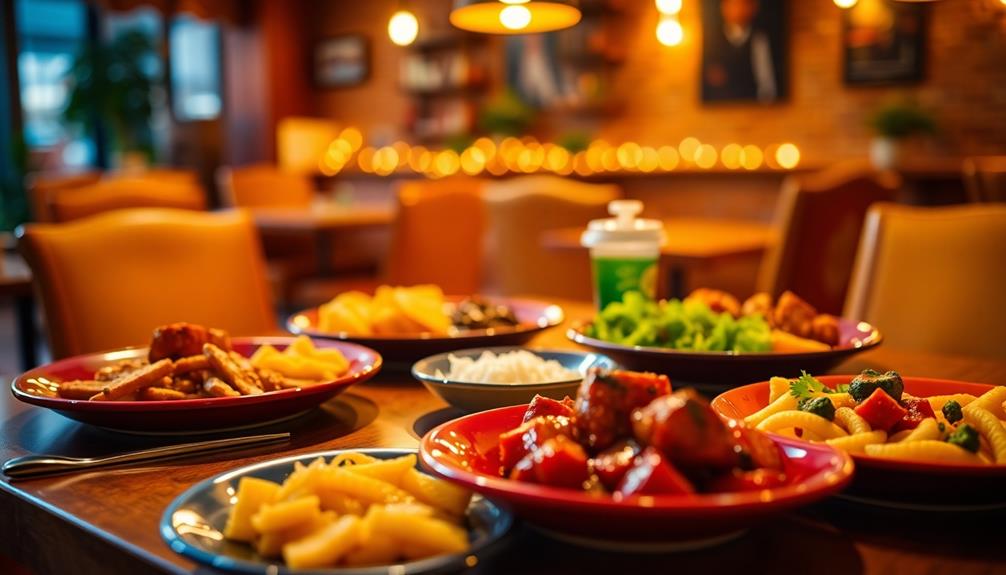
Color psychology plays an essential role in shaping your appetite and dining experience. The colors surrounding your food can notably influence your food choice and how much you enjoy your meal.
Warm colors like red, orange, and yellow can stimulate hunger and create a sense of excitement around your dining experience. For instance, when food is served on red plates, studies show that it can lead to increased energy intake. Additionally, dishes with vibrant colors, such as those found in Asian cuisine, can enhance visual appeal and make meals more enticing.
On the flip side, cool colors like blue and purple tend to suppress appetite. Blue foods are particularly rare in nature and have historically been linked to poison, making them less appealing.
When you think of green foods, however, they evoke images of fresh produce and are often perceived as healthier, enhancing their nutritional value in your mind.
Visual perception plays a vital role in these experiences, accounting for 80% of first impressions regarding food. As a result, the colors you choose for your dining environment can directly impact your appetite and overall satisfaction.
Embracing color psychology can transform your meals and elevate your enjoyment of food.
Effects of Red on Eating
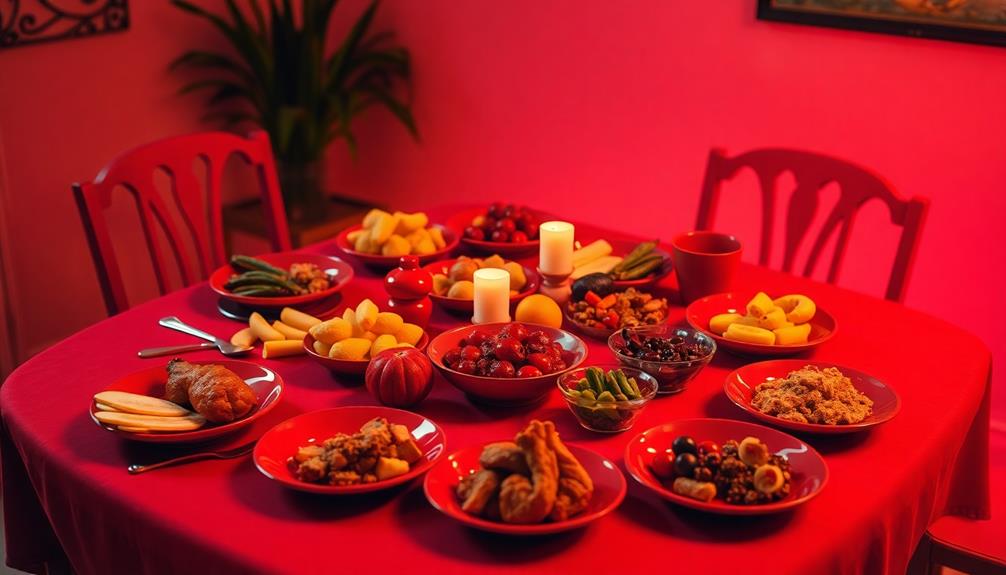
Red's vibrant hue has a powerful influence on your eating experience, often stimulating hunger and excitement. When you see red, your appetite may naturally increase, making it a popular choice in restaurant branding. This color creates a sense of urgency, encouraging you to choose meals that seem more appealing, such as Red-Braised Pork Belly.
In fact, studies suggest that food served on red plates might lead to reduced food intake due to subconscious associations of red with danger, which can affect your eating behavior.
However, the effects of red on your food choice aren't always straightforward. Environmental factors play a considerable role in how red is perceived. For example, in a cozy dining atmosphere, red might enhance your appetite, while in a bright, chaotic setting, it could overwhelm your senses.
Curiously, while red can boost food appeal, research indicates that its impact on food wanting isn't markedly different from other colors in certain contexts.
Ultimately, red can shape your dining experience, influencing both your appetite and your overall enjoyment of food. By understanding these color effects, you can make more mindful choices about your eating environment and habits.
Psychological Impact of Other Colors
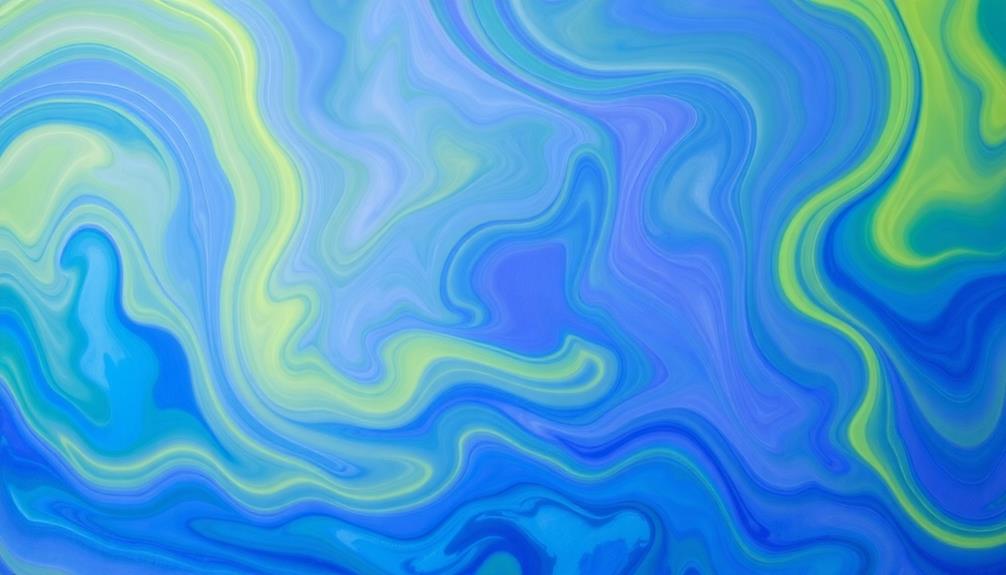
While red may dominate discussions about appetite, other colors considerably impact your dining experience, too. Yellow, for instance, is linked to happiness and can boost serotonin levels, making food presented in this vibrant hue more appealing. This encourages you to indulge more during meals.
Brazilian cuisine, with its colorful presentation, often utilizes vibrant yellows and greens, enhancing the visual appeal of dishes like Cuscuz Paulista. Similarly, orange evokes warmth and comfort, enhancing your enjoyment and fostering social interactions at the table.
On the healthier side, green foods are often perceived as fresh and nutritious, tapping into your ancestral eating habits favoring whole foods. This perception can positively influence your food choice, encouraging you to opt for salads and vegetables.
However, white foods can lead to mindless eating. The neutral tone may cause you to overlook calorie content and portion sizes, potentially impacting your eating habits negatively.
Interestingly, blue stands out as the only color that acts as an appetite suppressant. Historically associated with poisonous foods, its presence in dining settings can lead to reduced food intake, subtly encouraging you to eat less.
Unappetizing Colors to Avoid
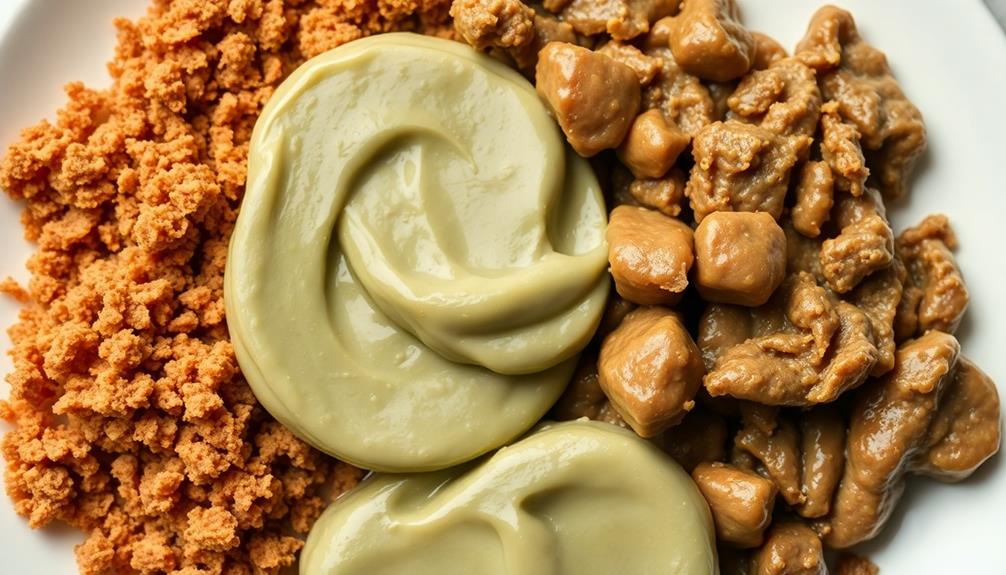
Certain colors can considerably detract from your appetite, making it important to be mindful of what hues you encounter in your meals. For instance, pink is often tied to raw meat or artificial products, which can reduce the overall appeal and desirability of your food.
Similarly, gray foods generally lack visual appeal and are often viewed as unappetizing, leading to lower consumption rates. Traditional Ethiopian dishes, like Yeselata, showcase vibrant colors that enhance their visual appeal and can stimulate appetite.
Brown foods can also diminish your appetite, as they're frequently associated with burnt or overcooked items. This negative perception makes these foods less enticing at mealtime. Additionally, unnatural colors—those not typically found in nature—can deter you from trying certain dishes, emphasizing the significance of authenticity in food presentation.
Cultural perceptions also play a significant role in how you view color and food. What might be deemed unappetizing in one culture could be entirely acceptable in another.
Consequently, it's vital to reflect on how these unappetizing colors, like gray, brown, and pink, can affect your appetite and the overall appeal of your meals. By avoiding these hues, you can enhance your food's visual appeal and encourage a more enjoyable dining experience.
Practical Color Applications in Cooking
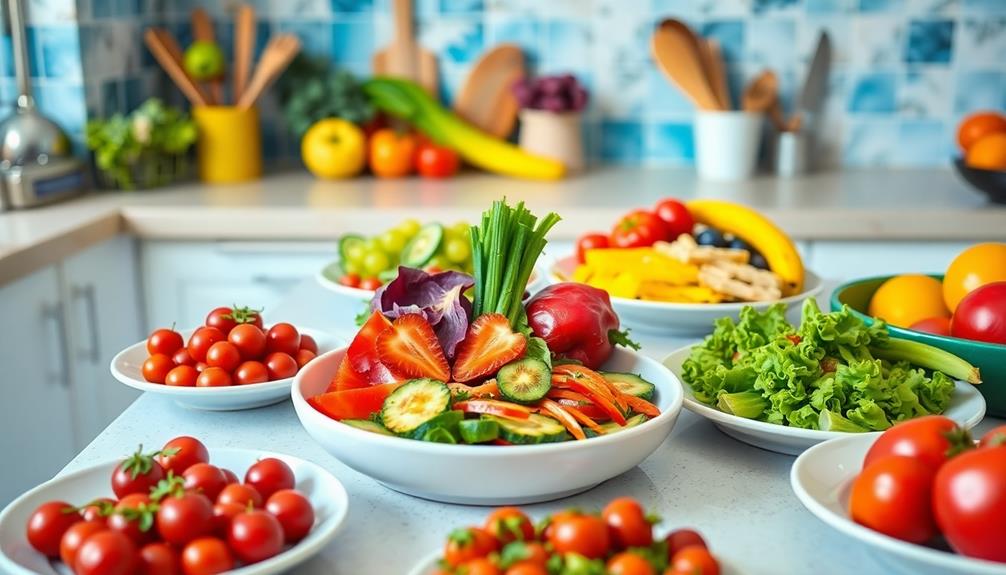
How can you make your meals more enticing? By understanding how colors influence appetite and food choices, you can transform your dishes into visually appealing creations.
Utilize warm colors like red, orange, and yellow in your food presentation to enhance the appeal of healthy foods, stimulating appetite and making meals more enjoyable. For instance, a dish like Nettle and Potato Soup can be served in vibrant bowls to accentuate its rich green color, making it even more inviting.
When you're looking to control portions, consider serving food on blue plates; the color blue is linked to appetite suppression, helping you manage your intake.
Incorporating vibrant colors in your meals not only elevates their perceived freshness but also makes them more likely to be chosen by guests. This is particularly important during social gatherings, where warm colors encourage socialization and create a positive dining experience.
If you're honing your skills in culinary courses, focus on applying these color principles to improve your presentation techniques. Thoughtful color choices can create memorable dining experiences, enticing your guests to fully engage with your culinary creations.
Culinary Arts and Color Theory
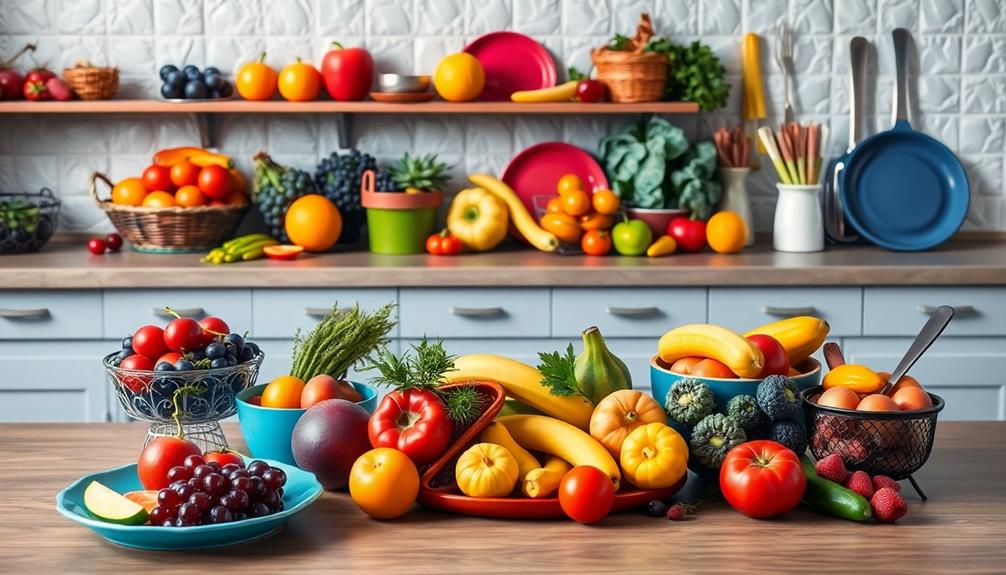
Understanding color theory is essential for anyone in the culinary arts, as it directly impacts how diners perceive and enjoy their meals. Warm colors like red and orange stimulate appetite, making them ideal for food presentation. For instance, a vibrant plate of Chilaquiles with its colorful toppings can enhance the visual appeal and entice diners even before they take a bite.
On the other hand, cool colors such as blue can suppress appetite, so consider your plate and dish colors carefully. Research shows that serving food on red plates can boost energy intake compared to white plates, underscoring the significance of color in food selection.
The visual appeal of your dishes plays a vital role in dining experiences. Studies reveal that about 80% of first impressions come from what diners see. By incorporating color psychology into your meals, you can evoke emotional responses that enhance enjoyment. For example, vibrant hues like red and orange can stimulate appetite, while cooler tones like blue often evoke a sense of calm. Additionally, considering the impact of music on dining can further elevate the experience, as the right soundtrack has been shown to influence the perception of taste and mood. Together, these elements create a multisensory journey that leaves a lasting impression on diners.
Using vibrant, seasonal produce not only beautifies your dishes but also indicates higher nutrient content. Brightly colored foods are often associated with healthier eating habits, making them a smart choice for both aesthetics and health.
Incorporating these insights into your culinary creations can elevate your dishes, entice diners, and lead to memorable experiences that keep them coming back for more.
Resources for Seasonal Cooking

The vibrant colors and flavors you create in the kitchen can greatly benefit from incorporating seasonal cooking. By using seasonal produce, you not only enhance the food color but also boost the nutritional content of your meals. Fresh, in-season fruits and vegetables are typically more affordable, allowing you to save money while enjoying delicious, healthy dishes.
For instance, using seasonal ingredients like fresh coconuts can elevate the taste and presentation of traditional Indonesian desserts such as Kue Putu.
Visiting local farmers markets is a fantastic way to access locally grown ingredients, which fosters community engagement and supports local agriculture. You can experiment with your creativity in meal planning and presentation by mixing different textures and colors that reflect the season. This not only makes your meals visually appealing but also increases your appetite.
When you focus on seasonal cooking, you can craft dishes that highlight the freshest flavors of the time, making your meals more enjoyable. Additionally, using seasonal ingredients reduces the carbon footprint associated with transporting out-of-season products.
Frequently Asked Questions
How Does Color Influence Appetite?
Color influences your appetite by evoking different emotions and associations. Warm colors like red and yellow stimulate your hunger, while cool colors like blue can suppress it, affecting your overall food choices and consumption levels.
Does Color Affect Food Choice?
Absolutely, color affects your food choices. When you see vibrant hues, you're likely to feel more drawn to the food. Conversely, muted or unexpected colors can lessen your desire to eat. It's all about perception.
What Color Makes Food Look More Appetizing?
Did you know that red can boost appetite by up to 20%? When you present food on red or yellow plates, it instantly makes dishes look more appealing, enhancing your dining experience and encouraging you to enjoy your meal.
What Color Suppresses Your Appetite?
If you're looking to suppress your appetite, consider incorporating blue into your dining experience. Using blue plates or even blue light can help reduce your food intake by creating a calming and less stimulating environment.
Conclusion
Next time you plate your meal, think of it like an artist creating a masterpiece. Just as a splash of red can draw the viewer in, vibrant colors on your plate can awaken your appetite. Research shows that we eat 20% more in colorful environments. So, don't underestimate the power of color; it's not just about taste but also the visual feast that entices us. Embrace this palette, and you might just transform mealtime into a celebration!
